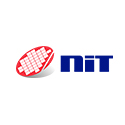 | Optimize the performance and cost of your automated optical imaging system 09 Sep 2021 Dover Motion Optimize the performance and cost of your automated optical imaging system with 6 key equations for selecting an imaging sensor, objective lens, Z-focusing nano-positioning stage and XY sample positioning motion. Topics covered include: optimal imaging sensor size and resolution, objective lens magnification and numerical aperture, and XYZ motion resolution and stability requirements to enable crisp images. Also discussed is how diffraction affects image resolution, and how to calculate the depth of field for a given objective lens. |
 | Long-range imaging – 800 nm OCT goes ultra-deep 25 Aug 2021 Wasatch Photonics Achieve imaging depths of up to 12 mm in a single scan with our Cobra-S 800 nm OCT optical spectrometer. Offering comparable image resolution at a much more cost-effective operating wavelength, long-range imaging at 800 nm has the potential to open up new opportunities for the practical application of long-range imaging in ophthalmology, medicine, and nondestructive testing. |
 | Overcoming Challenges Coating Polymer Optics 20 Aug 2021 EMF a Dynasil Company Discover how EMF is helping manufacturers save time and money coating polymer optics such as PMMA, PET, PEEK, and CR-39 without sacrificing optical performance. |
 | LISUN GROUP launched Integrating sphere and Flicker system to meet new ErP EU2019/2020 standard 09 Aug 2021 LISUN Group At present, ErP has issued new regulations (ErP Regulations (EU) 2019/2020 for Lighting Products and Energy Efficiency Labelling Regulations (EU) 2019/2015) on 5th December, 2019. The new regulations have come into effect on 25th December, 2019. That is, from 25th December, 2019, you can apply for the ErP of the new regulations. The new regulations will be enforced on 1st September, 2021. It means from 1st September, 2021, all products must be applied for in accordance with the new regulations. , The old regulations EC 244/2009, EC 245/2009, EU 1194/2012 and the energy efficiency label regulation EU 874/2012 are simultaneously invalidated. |
 | Camera Image Quality & Sensor Size How Many Megapixels is Too Many? 17 Jun 2021 Pro-lite Technology Pro-Lite provides a solution for almost any application in measuring the colour and brightness of light sources and displays. From a simple, inexpensive lux meter, to the world's most advanced imaging photometers, we have a light meter that you can rely upon to give you accurate, repeatable data. |
 | The “New” Raman: Streamlined, Flexible and Powerful 11 May 2021 Pro-lite It has been over 90 years since C.V. Raman received the Nobel Prize in Physics for the discovery which bears his name. Since that time, successive improvements in measurement systems have enabled Raman spectroscopy to become a powerful and versatile analytical tool that is applied in a vast array of applications from material science to medical diagnostics. |
 | Infrared sensing using nanocrystal toward on demand light matter coupling 06 May 2021 New Imaging Technology Nanocrystals are semiconductor nanoparticles whose optical properties can be tuned from UV up to THz. They are used as sources of green and red light for displays, and also show exhibit promises to design low-cost infrared detectors. Coupling subwavelength optical resonators to nanocrystals film enables to design photodiodes that absorb 80% of incident light from thin (<150 nm) nanocrystal film. It thus becomes possible to overcome the constraints linked to the short diffusion lengths which result from transport by hopping within arrays of nanocrystals enabling high photoresponse detector operating in the SWIR range. |
 | Infrared sensing using nanocrystal toward on demand light matter coupling 06 May 2021 New Imaging Technology Nanocrystals are semiconductor nanoparticles whose optical properties can be tuned from UV up to THz. They are used as sources of green and red light for displays, and also show exhibit promises to design low-cost infrared detectors. Coupling subwavelength optical resonators to nanocrystals film enables to design photodiodes that absorb 80% of incident light from thin (<150 nm) nanocrystal film. It thus becomes possible to overcome the constraints linked to the short diffusion lengths which result from transport by hopping within arrays of nanocrystals enabling high photoresponse detector operating in the SWIR range. |
| 5 Applications of Gratings 29 Apr 2021 Wasatch Photonics Diffraction gratings that operate in transmission can be used for many different applications, providing high efficiency, low stray light, and a range of dispersion options from 150-5000 lines/mm and operating at wavelengths 300-2500 nm. They also enable more compact, lens-based designs. Here, we review the top 5 most popular applications we see at Wasatch Photonics, and how our VPH transmission gratings excel at each. |
 | 5 Applications of Gratings 29 Apr 2021 Wasatch Photonics Diffraction gratings that operate in transmission can be used for many different applications, providing high efficiency, low stray light, and a range of dispersion options from 150-5000 lines/mm and operating at wavelengths 300-2500 nm. They also enable more compact, lens-based designs. Here, we review the top 5 most popular applications we see at Wasatch Photonics, and how our VPH transmission gratings excel at each. |
| © 2024 SPIE Europe |
|